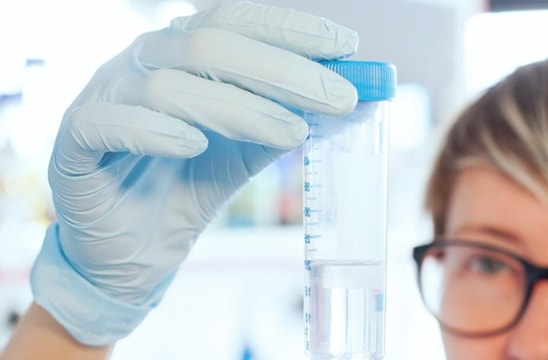Nothing about PFAS (per- and polyfluoroalkyl substances)—from how they are made, to their unique characteristics, to how they need to be analyzed—is easy. These man-made chemicals were developed to simplify our lives, but now decades later, they have become a serious problem due to their elusive and persistent nature, hence the nickname' The Forever Chemical.' What is clear is that PFAS contamination is an environmental and growing health issue, but what is less clear is how to address and manage this issue.
 Photo: PFAS compounds have been discovered in fire-fighting foams.
Photo: PFAS compounds have been discovered in fire-fighting foams.The importance of PFAS
PFAS are important because they have been widely used in industry and manufacturing due to their unique chemical properties — properties that make them heat-resistant, able to repel water, and close to indestructible. PFAS compounds have been used in many applications such as non-stick cookware, stain repellent clothes, food contact materials, detergents, cleaning products, and fire-fighting foams.
The unfortunate consequence of PFAS
For many years, PFAS were thought to be inert and nontoxic, and were extensively used with little thought for environmental disposal or ecological impact. It was not until early this century that the extent of PFAS global contamination was first realized. The research on PFAS compounds has identified them as being persistent and bio accumulative, and their widespread use has led to them being almost ubiquitous in the environment. Because PFAS do not break down, they enter the environment through production or waste streams. There are over 4000 PFAS compounds thought to have been manufactured, and now potentially in the environment globally.
"PFAS are a new style of pollutants that don't follow the 'rules' of traditional organic pollutants," says Bradley Clarke, senior lecturer in Analytical Chemistry and Environmental Science, at the University of Melbourne in Australia, and an Agilent collaborator. "This is why regulators and scientists, unfortunately, failed to predict how these chemicals would move through the environment, and why we now have a serious problem of such widespread PFAS contamination of drinking water, agricultural land, and the domestic environment."
 Photo: Agilent provides scientists with solutions to accurately analyze PFAS chemicals in water.
Photo: Agilent provides scientists with solutions to accurately analyze PFAS chemicals in water.PFAS exposure and human health
People can be exposed to low levels of PFAS compounds through consumer products that contain PFAS, for example, carpets, leather and apparel, textiles, paper and packaging materials, and non-stick cookware. Drinking water can also be a source of exposure in communities where these chemicals have contaminated water supplies, such as an industrial facility where PFAS were produced, or used to manufacture other products, or an oil refinery, airfield or other location at which PFAS may have been used for firefighting.
Helping scientists learn more about PFAS
Providing scientists around the world with measurement and identification technology solutions to accurately analyze PFAS chemicals in water – is a critical first step for estimating human exposure and potential risk. Robust analytical techniques that can provide unbiased quantitative and qualitative data on these PFAS pollutants at trace levels are necessary for further understanding their environmental fate, ecological impacts, and impacts on public health. These analytical techniques and the fundamental data they generate will allow scientists and regulators to make informed assessments of PFAS use in modern society.
Agilent solutions enable water testing for PFAS
PFAS contamination is a complex issue. While knowledge about PFAS compounds and the potential health effects has grown, many questions remain unanswered. Committed to helping scientists and regulators around the world solve these water issues to provide safe and sustainable water sources for everyone, Agilent has recently developed a protocol for analysis of PFASs in drinking water using the Agilent Ultivo triple quadrupole LC/MS. Working with leading researchers around the world, Agilent has also developed a method for extracting PFASs in drinking water using Agilent Offline Solid Phase Extraction and an Agilent LC/MS/MS system with a PFAS-free 1290 Infinity II LC System.
For Research Use Only. Not for use in diagnostic procedures.
Learn more:
- PFAS - The Forever Chemical
- Detect, Quantify and Identify PFAS in Water with Confidence
- Ultivo triple quadrupole LC/MS (LC/TQ)
- Solid Phase Extraction (SPE)
- 6470A Triple Quadrupole LC/MS
- Reduce PFAS Background with the Agilent PFC-Free HPLC Conversion Kit